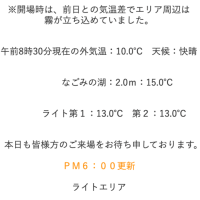The strange behavior called U effect of the endocrine disruptor is similar to the concentration quenching of luminance material.
However, there is no evidence of influence for suche effect. The effect might be affected other conditions.
Such news or information disturb us and make us the chemical materials are very hazardous.
The concentration quenching is interesting reaction of luminance science.
For example, Pyrene which is condensed ring aromatic compound is famous as fluorescence substance. The monomer fluorescence intensity of pyrene increases with the increasing of the concentration of itself at low concentration.
However more increasing of the concentration, the intensity of monomer fluorescence would be decayed and other fluorescence called excimer fluorescence emitted from excited dimer of pyrene will increase with the increasing of the concentration.
Such decay of monomer fluorescence is called as concentration quenching.
Most compounds don't emit at dimer. Pyrene dimers sometimes quench their excimer fluorescence in polymer matrix or in the solid state of the solution at low temperature. Such is thought the structure of pyrene dimer is not face-to-face on their plane. Such structures of pyrene dimers are called quenching dimers.
The U effect of the endocrine disruptor is thought that it is similar to this concentration quenching. But the proponent of the U effect did not show or exhibit the evidences of it.
Therefore, now most chemical scientists and engineers deny the U effect of the endocrine disruptor.
However, there is no evidence of influence for suche effect. The effect might be affected other conditions.
Such news or information disturb us and make us the chemical materials are very hazardous.
The concentration quenching is interesting reaction of luminance science.
For example, Pyrene which is condensed ring aromatic compound is famous as fluorescence substance. The monomer fluorescence intensity of pyrene increases with the increasing of the concentration of itself at low concentration.
However more increasing of the concentration, the intensity of monomer fluorescence would be decayed and other fluorescence called excimer fluorescence emitted from excited dimer of pyrene will increase with the increasing of the concentration.
Such decay of monomer fluorescence is called as concentration quenching.
Most compounds don't emit at dimer. Pyrene dimers sometimes quench their excimer fluorescence in polymer matrix or in the solid state of the solution at low temperature. Such is thought the structure of pyrene dimer is not face-to-face on their plane. Such structures of pyrene dimers are called quenching dimers.
The U effect of the endocrine disruptor is thought that it is similar to this concentration quenching. But the proponent of the U effect did not show or exhibit the evidences of it.
Therefore, now most chemical scientists and engineers deny the U effect of the endocrine disruptor.



















